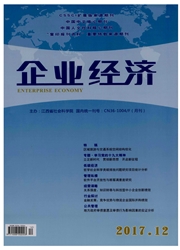

 中文摘要:
中文摘要:
“一带一路”战略的实施为陕西入境旅游的发展带来了难得的机遇,也改变了陕西入境旅游客源市场的格局。本文依据《中国旅游统计年鉴》(2011-2016年)等数据,运用动态偏离份额法(DSSM),对2011-2015年陕西入境旅游客源市场结构演变作了分析。研究发现:2011-2015年,陕西的16个主要客源市场对客源增长的贡献呈稳定型、增强型、衰退型、波动型四种演变态势。近程市场除日本和菲律宾外,竞争力强且持续稳定。远程市场中,大洋洲市场的竞争力强且持续稳定,西欧和北美市场的竞争力则呈现出“强—弱—强”的规律性波动。“一带一路”战略背景下,陕西应打造“丝绸之路起点”旅游品牌,开拓中亚等新兴市场;大力推进旅游供给侧改革,巩固欧美传统市场;创新旅游营销方式,深耕港澳台重要市场。
 英文摘要:
英文摘要:
The implementation of "the Belt and Road" strategy has brought a rare opportunity to the development of inbound tourism in Shaanxi Province, and also changed the pattern of the inbound tourism generating market in Shaanxi Province. According to the data of the Yearbook of China Tourism Statistics from 2011-2016, the generating market structure of Shaanxi inbound tourism during the period of 2011-2015 has been analysed by using dynamic shift-share method. It has been discovered that during the period of 2011-2015, the growth trend of 16 main generating markets has steady, increasing, decreasing and waving modes. Besides Japan and Philippe, neighbor market is competitive and steady. In long-distance market, the Oceania market has strong competitive ability and remains steady, Western European and North American markets have showed a regular wave of being "strong-weak-strong". Under the background of "the Belt and Road" strategy, Shaanxi should build tourism brand of "the Starting Point of the Silk Road", and expand new markets of the Central Asia; promote vigorously the reform of tourism supply, consolidate the traditional markets in Europe and the America; innovate the mode of tourism marketing; and deepen the important markets such as Hong Kong, Macao and Taiwan.
 同期刊论文项目
同期刊论文项目
 同项目期刊论文
同项目期刊论文
 期刊信息
期刊信息
